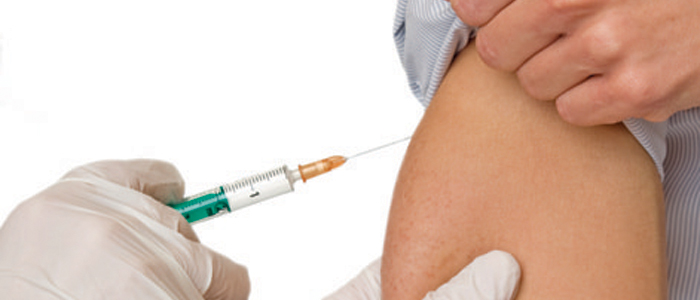Meningitis
In Clinical
Follow this topic
Bookmark
Record learning outcomes
Scenario
Customer Hannah Wright is talking to pharmacy technician Vicky. “I’ve been offered a place back at uni from September,” says Hannah.
“Dropping out was definitely the right thing to do when Dad was so unwell for all those months and with everything that needed sorting out after he died, but I loved studying so it feels like it could really be the fresh start I need.” “That’s fantastic, Hannah, I’m so pleased for you,” says Vicky. “Make sure you come and see us before you go off, won’t you? Oh, and don’t forget to get your meningitis ACWY jab done before you start.”
“Of course I’ll come and say goodbye,” replies Hannah. “But don’t worry about the meningitis injection – I had it done when I first started at uni in 2014, although they called it meningitis C then.”

Answer
Hannah is misguided in thinking that the meningitis C vaccination she received in 2014 is the same as the ACWY immunisation Vicky has spoken about. Since 2009, cases of previously rare meningitis W have been on the increase because of the emergence of a particularly aggressive bacterial strain known as ST-11. For this reason, Men ACWY vaccination – previously predominantly recommended only for those making the Hajj pilgrimage to Mecca – was introduced in August 2015 in order to provide protection against four groups of meningococcal bacteria.
University students are one of the main groups being targeted for Men ACWY vaccination because they are considered at greater risk of contracting meningitis W. This is due to the bacteria being more likely to be carried by teenagers and young people, and passed to others during the sudden mingling of young people from across the country that occurs at the start of the new academic year, particularly among those moving into communal accommodation such as halls of residence. Just a single dose of the vaccine is required and Hannah should make sure she has had it administered at her GP surgery before departing from home in a few months’ time, or shortly after arriving at university.
The bigger picture
Meningococcal disease is caused by the Neisseria meningitidis bacterium, of which there are 13 subtypes. Of these, five – A, B, C, W and Y – are responsible for nearly all cases of serious meningococcal infection. Those affected by Men W are usually seriously ill, often requiring a stay in intensive care, and the death rate is higher than is the case for the more common Men B and Men C strains. Meningitis C rates have fallen in the UK since the introduction of the childhood immunisation schedule of a vaccine against the group of bacteria (serogroup) in 1998, and cases of meningitis B are also expected to start to decline following the addition of Men B last September.
The symptoms of bacterial meningitis can include fever, vomiting, drowsiness, confusion, muscle pain, skin rash, headache, stiff neck, photophobia (sensitivity to light) and convulsions or seizures. A baby or young child may refuse to feed, be unresponsive, have an unusual and high-pitched cry and have a bulging fontanelle on the top of their head.
Prompt recognition and hospital treatment are key to making a full recovery, otherwise permanent neurological damage – ranging from minor coordination or learning problems to deadness, paralysis and severe mental impairment – may occur. If septicaemia (blood poisoning) ensues, long-term issues may include scarring, amputation or organ damage.
Meningitis can also be the result of a viral infection. While this is more common than bacterial meningitis, it is also considerably less serious, often being mistaken for a cold or flu. Viral meningitis is more common during the summer months and in children. Meningitis can also result from a fungal infection or exposure to a chemical, although both are extremely rare.
Extend your learning
- Read the NHS leaflet on meningitis and septicaemia
- Find out who else is being offered Men ACWY vaccination – and who shouldn’t receive the product – here
- The glass test is commonly cited as an aid to diagnosing meningitis, but would you know what to do and what to look for if someone asked? Find out more here.
